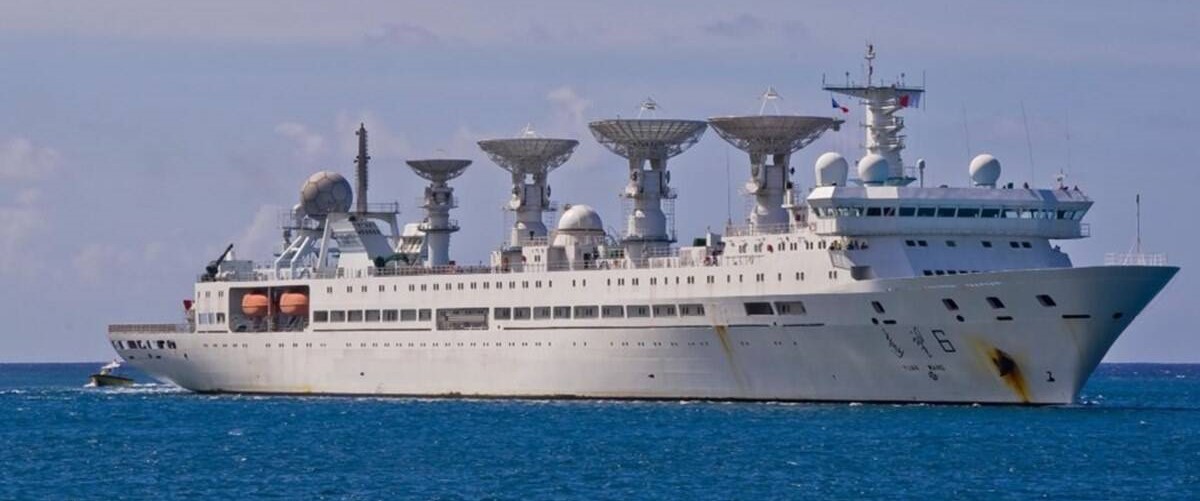News Highlights
India reacted strongly to Sri Lanka request to delay the visit of a tracking vessel that was due to arrive and had aroused India’s concerns.
China described India’s opposition to the visit as “senseless” and “urged” India to “not disturb normal exchanges” between the two countries.
Key takeaways
- India is closely monitoring the movement of a Chinese spy ship on its way to Sri Lanka.
What is this Chinese ship that is heading for Sri Lanka?
- The ‘Yuan Wang 5’, a Chinese research and survey vessel, is en route to Hambantota port.
- This port is a strategically crucial deep-sea port, developed mainly using loans from China.
- The ‘Yuan Wang’-class ships are used to track satellite, rocket, and intercontinental ballistic missile (ICBM) launches.
Why is India concerned about this development?
- The ‘Yuan Wang 5’ is a powerful tracking vessel.
- Its significant aerial reach — reportedly around 750 km — means that several ports in Kerala, Tamil Nadu, and Andhra Pradesh could be on China’s radar.
Why is the Hambantota port crucial strategically?
- The Hambantota sits on the route connecting Southeast Asia with Africa and West Asia.
- It is an essential step in the Belt and Road Initiative (BRI) for China.
- The BRI is a global infrastructure development strategy adopted by the Chinese government.
- Hambantota’s proximity to India has the potential to allow the Chinese navy just the maritime flex aimed at India that it has been seeking for a long time.
The Hambantota Port
- The port is known as the Magampura Mahinda Rajapaksa Port.
- It is a marine inland port located in Hambantota, Sri Lanka.
- The port was inaugurated in 2010.
- This port is a deep-water port on the southern tip of Sri Lanka.
China-Sri Lanka relations
- Largest Creditor to Sri Lanka:
- China is the Sri Lanka government’s biggest bilateral lender and owns at least 10 per cent of its $51 billion in external debt.
- Sri Lanka heavily relies on Chinese credit to address its foreign debt burden.
- Chinese Investment in Infrastructure Projects:
- China invested about USD 12 billion in Sri Lanka’s infrastructure projects between 2006-19.
- China’s flagship projects are the Hambantota Port Development and the Colombo Port Project, both supported by loans and located at strategic points on the global sea trade route.
- In the Indian Ocean, China is exploring:
- China enjoys friendlier waters in South Asia and the Indian Ocean than in Southeast Asia and the Pacific.
India’s worries
- Internal security concerns:
- Some of India’s major strategic infrastructures are located in southern Indian states, such as the Kudankulam Nuclear Power Plant in Tamil Nadu and Visakhapatnam ports in Andhra Pradesh and the Indian Space Research Organisation (ISRO) in Thumba.
- Opposition to the SAGAR Initiative:
- The Security and Growth of All in the Region(SAGAR) refer to India’s vision and geopolitical framework of maritime cooperation in the Indian Ocean region.
- Chinese illegitimate presence in the Indian Ocean region would impact this initiative.
- Influencing India’s Neighbors:
- Other South Asian nations like Bangladesh, Nepal, and the Maldives have also been turning to China to finance large-scale infrastructure projects.
- This may affect India’s cordial relations with these countries.
Way forward
- Taking Advantage of Regional Platforms:
- Platforms like the Bay of Bengal Initiative for Multi-Sectoral Technical and Economic Cooperation (BIMSTEC), the South Asian Association for Regional Cooperation (SAARC), SAGAR and the Indian Ocean Rim Association (IORA) could be leveraged to foster cooperation and coordination and also help to strengthen trust and diplomatic relations.
- Restraining Chinese Expansion:
- India will need to continue to work on the Kankesanturai port in Jaffna and the oil tank farm project in Trincomalee to ensure that China does not make any further inroads into Sri Lanka.
- Leveraging India’s soft power:
- In the technology sector, India can create job opportunities in Sri Lanka by expanding the presence of its IT companies.
- These organizations can create thousands of direct and indirect jobs and boost the island nation’s service economy.
Pic Courtesy: The Hindu
Content Source: The Hindu



